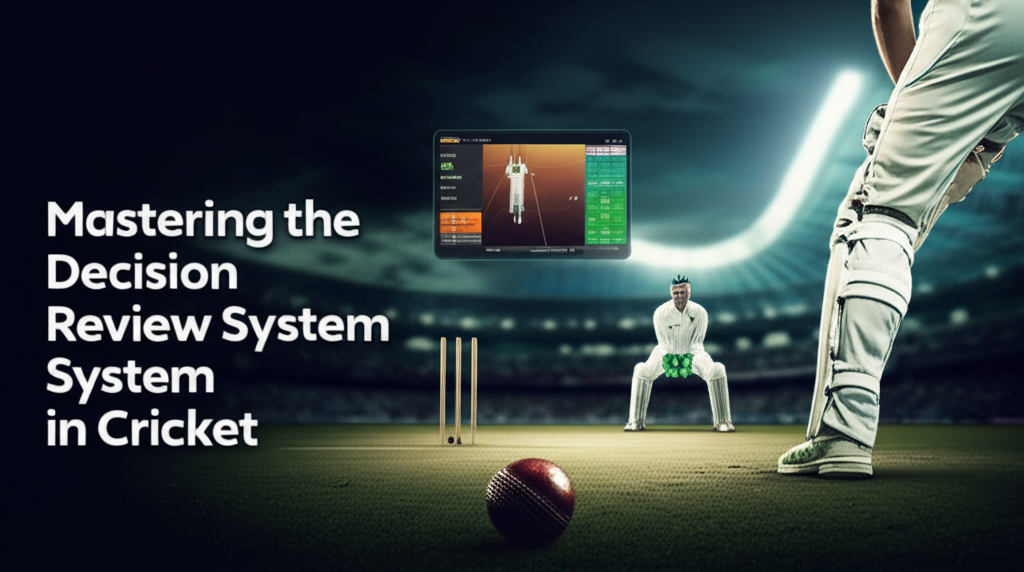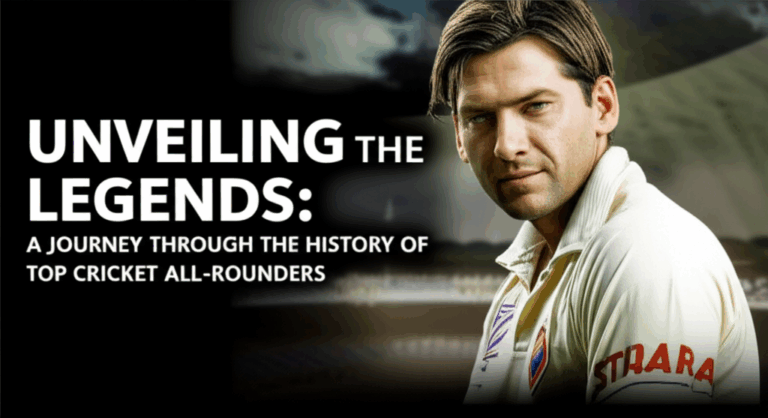
Cricket, a sport steeped in tradition and strategy, has evolved significantly over the years, and one of the most transformative innovations has been the introduction of the Decision Review System (DRS). Imagine being a player, a coach, or even a fan, watching a crucial moment in a game where the stakes are sky-high, and a single decision could swing the match. The DRS aims to minimize the impact of human error in such critical moments, ensuring fair play and accurate outcomes. In this article, we’re going to dive deep into mastering the Decision Review System in cricket, exploring its impact, key components, and strategies for effective usage.
As we journey through this guide, you’ll discover how the DRS works, its benefits and importance, and practical applications that can enhance your understanding of the game. Whether you’re a budding cricketer, a seasoned fan, or someone just looking to grasp the intricacies of this fascinating system, you’ll gain valuable insights that can elevate your appreciation of cricket. So, what exactly is the DRS, and how can it change the way we watch and play cricket? Let’s find out!
Understanding the Decision Review System
The Decision Review System, commonly known as DRS, is a technology-based system used in cricket to assist umpires in making more accurate decisions. Introduced in international cricket in 2008, the DRS was developed to address the challenges and controversies often associated with on-field umpiring. But how does it work? At its core, the DRS utilizes various technologies, including ball tracking systems, ultra-edge technology, and player reviews, to allow teams to challenge umpire decisions.
When a player feels that an on-field decision is incorrect, they can request a review. This process typically involves a coach or player signaling to the umpire, who then refers the decision to the third umpire. The third umpire has access to the available technology and makes a recommendation based on the evidence. It’s essential to note that the DRS is not a tool for players to overturn every decision; instead, it serves as a safety net for clear and obvious errors.
Key Components of the Decision Review System
To truly master the DRS, it’s vital to understand its key components. Here are the primary elements that make the system effective:
1. Ball Tracking Technology
Ball tracking technology, such as Hawk-Eye, is one of the most critical components of the DRS. This system predicts the trajectory of the ball after it has been delivered, helping to assess whether it would have hit the stumps or not. Umpires use this information to make informed decisions about LBW (Leg Before Wicket) appeals.
2. Ultra-Edge Technology
Ultra-Edge, or Snickometer, is another vital tool in the DRS arsenal. This technology detects even the slightest contact between the bat and ball, aiding umpires in determining whether a batsman has edged the ball before being caught. By analyzing sound waves, Ultra-Edge provides clear evidence to support or overturn on-field decisions.
3. Player Reviews
Each team is allowed a specific number of unsuccessful reviews per innings (usually two in Test matches and one in limited-overs games). If a team successfully overturns an on-field decision, they retain their review. This aspect encourages teams to use their reviews judiciously and strategically.
4. Third Umpire
The third umpire plays a crucial role in the DRS process. This official has access to all available technology and evaluates the evidence before making a recommendation to the on-field umpire. Their role is to ensure that the best possible decision is made using the available technology.
Benefits and Importance of DRS
The introduction of the DRS has brought several benefits to the game of cricket. Understanding these advantages is essential to grasping its significance fully. Here are some of the key benefits:
1. Enhanced Accuracy
The primary aim of the DRS is to enhance the accuracy of decisions made in cricket. With technology at play, umpires can make more informed choices, reducing the chances of human error. This improvement in accuracy has contributed to a fairer game, allowing players to focus on their performance rather than contentious decisions.
2. Increased Fairness
DRS promotes fairness in the sport, as it provides players with a means to contest unfavorable decisions. This system ensures that teams have a chance to rectify significant errors, thereby upholding the spirit of the game.
3. Player Confidence
With the DRS in place, players can feel more confident in their decisions and the overall integrity of the match. Knowing that there is a system to assist in decision-making allows players to focus on their skills and strategies without the fear of unjust outcomes.
4. Engaging Spectators
The DRS adds an element of suspense and excitement for spectators. As fans, we are often on the edge of our seats when a review is called, eagerly anticipating the outcome. This engagement enhances the viewing experience, making matches more thrilling.
5. Educational Tool
For new players and fans, the DRS serves as an educational tool. Understanding how technology impacts decision-making in cricket can deepen one’s appreciation of the game and its complexities. It opens avenues for discussions about the evolving nature of sports.
Practical Applications of DRS Strategies
Now that we understand the components and benefits of the DRS, let’s delve into some practical strategies for effectively utilizing it in various scenarios. Mastering these strategies can significantly influence the outcome of a match.
1. Timing Your Reviews
One of the most critical aspects of using the DRS effectively is timing. Teams must assess the situation before deciding to review a decision. For instance, it’s wise to save a review for a potentially game-changing moment rather than using it on a marginal call early in the innings. Keep in mind that the game can shift dramatically based on pivotal moments.
2. Communication is Key
Effective communication between players, the captain, and the coaching staff is essential when deciding to invoke the DRS. Captains should create an environment where players feel comfortable expressing their opinions about potential reviews. This collaboration can lead to more strategic and successful challenges.
3. Understanding Umpire Tendencies
Every umpire has their unique tendencies when making decisions. Some may lean towards giving the benefit of the doubt to the batsman, while others may be stricter. By observing these tendencies, teams can better gauge when to use their reviews. This knowledge can be a game-changer in tight matches.
4. Learning from Past Mistakes
Analyzing past reviews, both successful and unsuccessful, can provide valuable insights for teams. By studying the outcomes, teams can refine their approach and make better decisions in future matches. This continuous learning process is vital for mastering the DRS.
5. Mental Preparation
Finally, mental preparation is crucial for players when it comes to the DRS. Understanding the pressure of making a call to review can impact a player’s performance. Practicing decision-making scenarios in training can help players develop the confidence to utilize the DRS effectively during matches.
Frequently Asked Questions
What is the Decision Review System (DRS)?
The Decision Review System (DRS) is a technology-based system used in cricket to assist umpires in making accurate decisions. It allows teams to challenge on-field decisions through various technologies, including ball tracking and ultra-edge technology. The goal is to minimize human error and uphold the integrity of the game.
How does the DRS work during a match?
During a match, if a player believes an on-field decision is incorrect, they can request a review. The third umpire evaluates the available technology and provides evidence to support or overturn the decision. Teams have a limited number of reviews per innings, which adds a strategic element to the process.
What technologies are used in the DRS?
The DRS employs several technologies, including ball tracking systems like Hawk-Eye, ultra-edge technology (Snickometer), and real-time audio analysis. These tools provide comprehensive data to assist umpires in making informed decisions about contentious calls, such as LBWs or catches.
Can teams lose their reviews?
Yes, teams can lose their reviews if they challenge an on-field decision unsuccessfully. However, if a team successfully overturns a decision, they retain their review. This mechanic encourages teams to use their reviews judiciously and strategically throughout the match.
What are some controversies surrounding the DRS?
Despite its advantages, the DRS has faced criticism and controversy. Some argue that the technology is not infallible and that it can lead to confusion among players and spectators. Additionally, discrepancies in the accuracy of different technologies can affect the reliability of decisions. However, ongoing improvements aim to address these concerns.
Has the DRS changed the way cricket is played?
Yes, the DRS has significantly changed the way cricket is played. It has introduced a new layer of strategy for captains and players, as they must consider the DRS when making tactical decisions. Additionally, it has fostered a culture of accountability and fairness in the sport, ensuring that players and teams can contest unjust calls.
Conclusion
As we’ve explored throughout this guide, mastering the Decision Review System in cricket is about understanding its components, recognizing its benefits, and applying strategic insights. The DRS not only enhances the accuracy and fairness of the game but also adds excitement for players and fans alike. By timing your reviews wisely, fostering communication, and learning from past experiences, you can become adept at utilizing this powerful tool.
So, the next time you watch a cricket match, pay close attention to the DRS in action. You’ll gain a deeper appreciation for the strategy behind every review and the technology that supports it. Engage with fellow fans, share your insights, and perhaps consider how you might implement these strategies in your own cricketing endeavors. The world of cricket is rich and complex, and with the DRS, it’s becoming even more fascinating!




